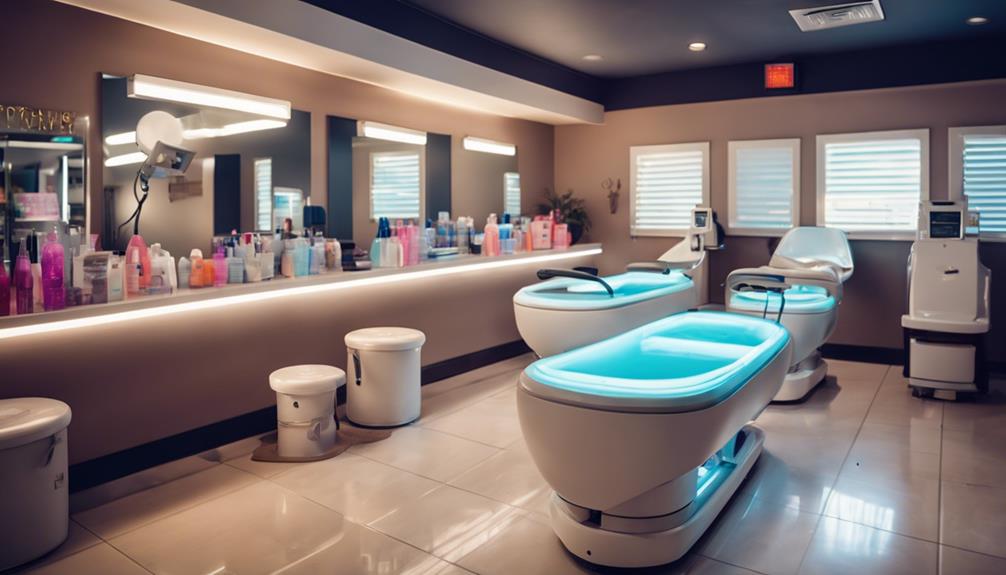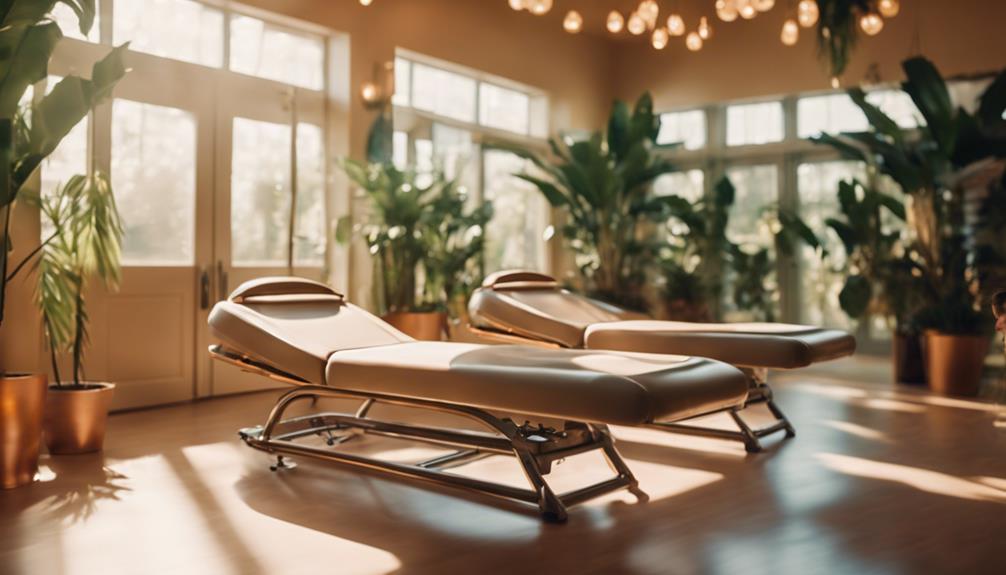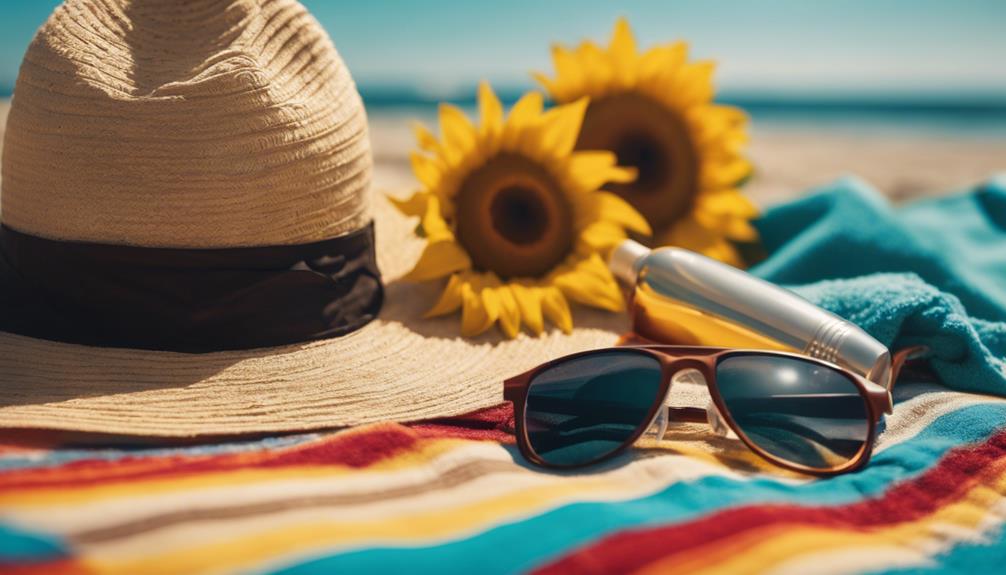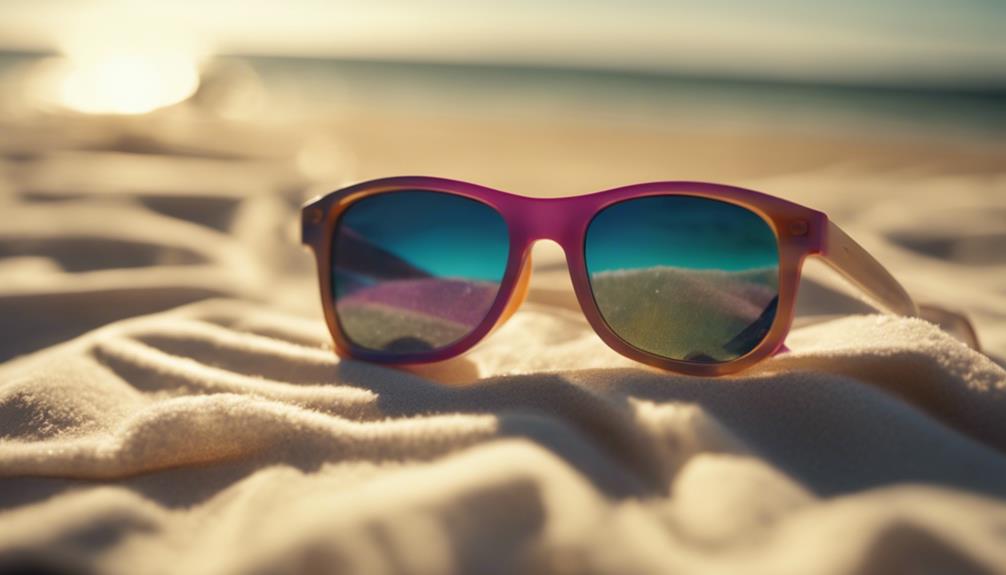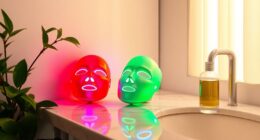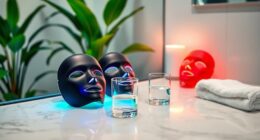To keep your tanning salon safe and clean, you need to follow essential cleaning and safety practices. Clean tanning beds with a pH neutral disinfectant after each session, and use test strips to check effectiveness. Weekly, scrub all surfaces and sanitize high-touch areas like door handles. Encourage clients to wear protective eyewear and hydrate before and after tanning. Maintain strict hygiene for staff, including handwashing and the use of gloves. By adhering to these tips, you'll create a welcoming atmosphere for clients. There's more to discover about elevating your salon's standards and practices.
Key Takeaways
- Disinfect tanning beds with pH neutral disinfectant after each session and verify effectiveness with Quat Test Strips.
- Implement weekly deep cleans for all surfaces, especially high-touch areas like door handles and counters.
- Enforce strict handwashing protocols and use personal protective equipment for staff hygiene.
- Ensure clients wear protective eyewear and disclose any medications or skin conditions before tanning sessions.
Daily Disinfection Practices
To keep your tanning salon safe and welcoming, start each day by thoroughly disinfecting tanning beds with a pH neutral disinfectant like Australian Gold.
After spraying, use disinfectant quat test strips to confirm the cleaning's effectiveness, ensuring a germ-free environment for your clients.
Don't forget to polish the acrylic surfaces with Novus #1 Acrylic Polish for a shiny finish; it enhances the beds' appearance and maintains client satisfaction.
For deeper scratches, address them with Novus #2 and #3 to guarantee ideal clarity.
Cleaning after each session is essential to prevent skin issues and maintain a positive experience.
Weekly Deep-Clean Strategies
Implementing a weekly deep-clean strategy is essential for maintaining a safe and inviting tanning salon environment.
Start by using Australian Gold PH Neutral Disinfectant Cleaner to scrub all surfaces thoroughly.
Check the effectiveness of your disinfectant with Quat Test Strips to verify it's working properly.
Don't forget to clean and sanitize high-touch areas like door handles and counters.
Make certain to focus on the appearance of the tanning beds, as a clean bed enhances client comfort and satisfaction.
Schedule this deep clean during off-peak hours to minimize disruption.
Consistency is key—regular deep cleaning not only protects your clients but also reinforces your commitment to high hygiene standards in your salon.
Tanning Bed Care
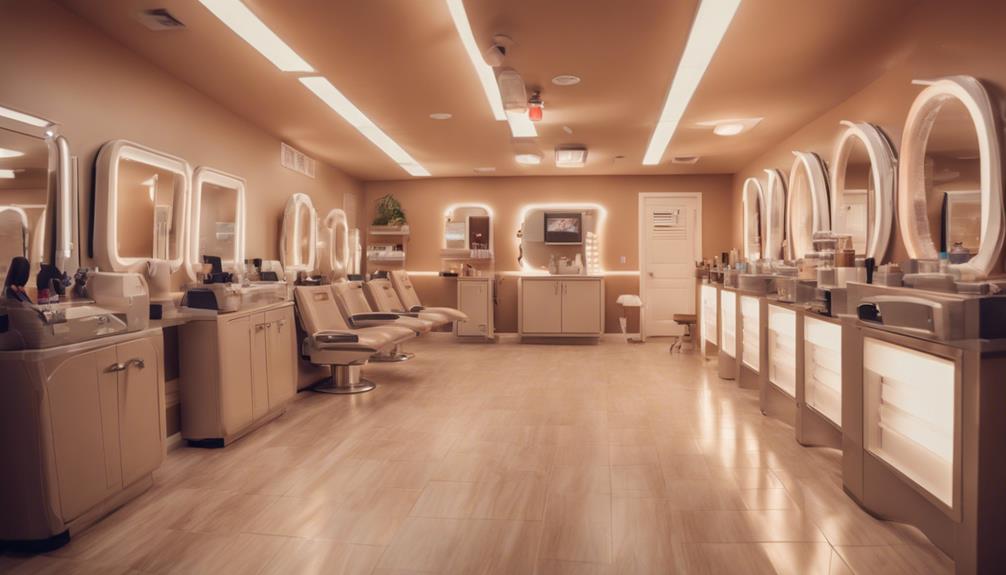
Maintaining tanning beds in top condition is essential for ensuring client safety and satisfaction.
Clean your tanning beds after each session using a pH neutral disinfectant, like Australian Gold, to effectively eliminate germs.
Don't forget to check the cleaning effectiveness with Quat Test Strips; this step is vital.
For a polished look, use Novus #1 Acrylic Polish on the acrylic surfaces, while Novus #2 and #3 can help with deeper scratches.
Weekly deep cleans should also be part of your routine, scrubbing all surfaces thoroughly.
Regular maintenance not only prevents skin issues for clients but also enhances their overall experience, creating a welcoming and hygienic environment that keeps them coming back.
Client Safety Protocols
Client safety protocols are essential for creating a secure tanning experience, ensuring you enjoy your sessions without unnecessary risks.
Always wear protective eyewear during your tanning sessions to shield your eyes from harmful UV rays.
Stick to recommended exposure times to avoid overexposure and potential skin damage.
If you're on any medications or have skin conditions, let your tanning technician know, as these can affect your session.
Remember to hydrate your skin before and after tanning to promote a healthy glow.
If you experience any skin sensitivity or allergies, address them with the staff so they can tailor your experience.
Following these guidelines helps you achieve the best results while prioritizing your safety.
Pre and Post-Tanning Tips
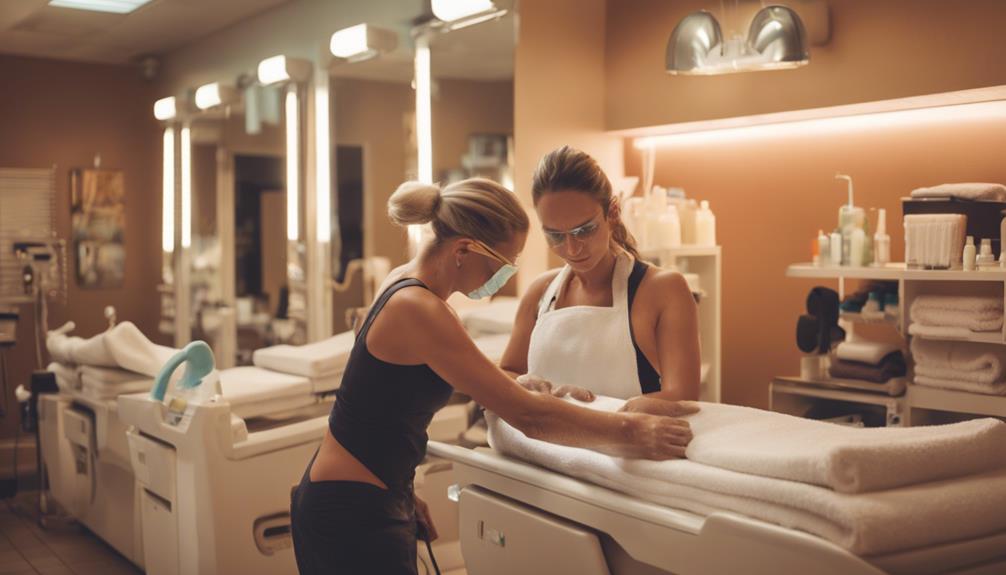
Before tanning, take a pre-tanning shower to cleanse your skin and guarantee an even tan. This removes dirt, oils, and any products that might create a barrier to the tanning solution.
After your session, rinse off to wash away any residual tanning products and refresh your skin. It's also essential to moisturize afterward; this helps maintain your tan and keeps your skin hydrated.
Limit your tanning sessions to once or twice a week to avoid overexposure, which can lead to skin damage. Always wear protective eyewear during sessions and disclose any medications that might affect your skin.
Following these tips will enhance your tanning experience while ensuring your skin stays healthy and radiant.
Staff Hygiene Standards
Proper staff hygiene standards are essential for ensuring a safe and healthy tanning environment for everyone.
You need to enforce strict handwashing protocols; wash your hands for at least 20 seconds with soap and water before and after each client. Always wear personal protective equipment, like gloves and aprons, to prevent contamination.
After every session, make sure tanning beds are wiped down thoroughly to eliminate germs. Regularly disinfect all salon surfaces, keeping them clean and hygienic.
Additionally, participate in ongoing training to stay updated on best hygiene practices.
Emerging Tanning Trends
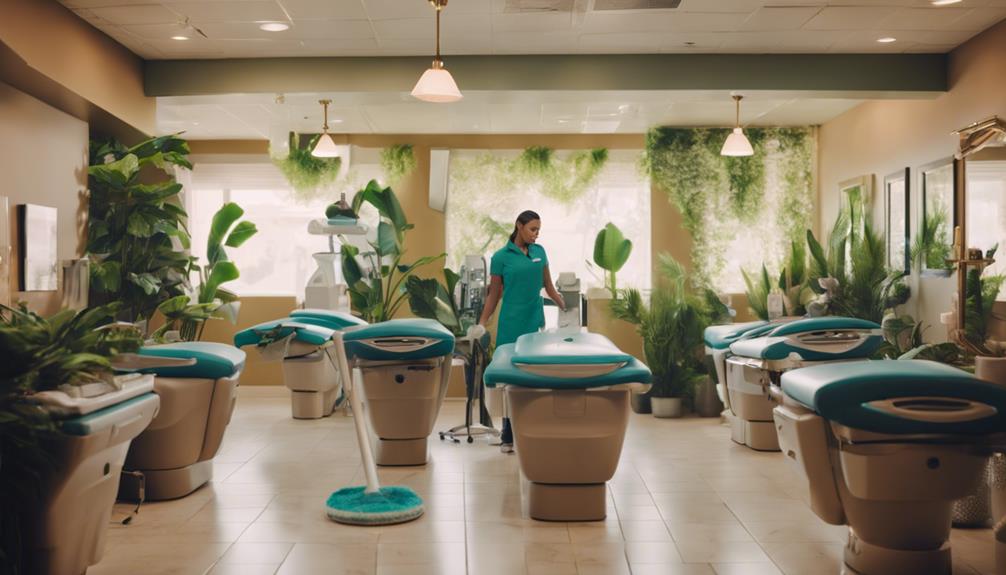
As the tanning industry evolves, new trends are emerging that cater to a safer and more personalized tanning experience. You're likely to encounter advancements like customized tanning solutions that match your skin type, ensuring ideal results. Additionally, more salons are adopting eco-friendly products, reducing harmful chemicals in their services.
Here's a quick overview of some emerging trends:
| Trend | Description | Benefits |
|---|---|---|
| Custom Tanning Solutions | Tailored formulas for individual skin types | Enhanced results, safer tanning |
| Eco-Friendly Products | Natural ingredients in tanning solutions | Less chemical exposure, eco-conscious |
| Portable Tanning Devices | At-home tanning systems for convenience | Flexibility and ease of use |
Stay ahead of the curve by exploring these innovative options!
Frequently Asked Questions
What Disinfectants Are Safe for Use on Tanning Beds?
When choosing disinfectants for tanning beds, look for pH neutral options like Australian Gold. Always check with quat test strips to verify effectiveness, keeping your clients safe and the beds in pristine condition.
How Often Should Tanning Bulbs Be Replaced?
Did you know that tanning bulbs typically last about 1,000 hours? You should replace them every 500 to 1,000 hours of usage to guarantee peak performance and maintain the quality of your tanning sessions.
Are There Specific Cleaning Products to Avoid on Acrylic Surfaces?
When cleaning acrylic surfaces, avoid ammonia-based products, harsh abrasives, or solvents. They can scratch or damage the acrylic. Stick to pH neutral disinfectants and gentle polishes for maintaining clarity and shine without causing harm.
How Can Salons Ensure Clients Follow Safety Guidelines?
Studies show that 30% of clients neglect safety guidelines. To guarantee compliance, you can educate clients through clear signage, provide verbal reminders, and encourage them to ask questions about safety practices during their tanning sessions.
What Certifications Should Tanning Salon Staff Obtain?
To guarantee high-quality service, you should obtain certifications in tanning safety, first aid, and sanitization practices. These credentials enhance your knowledge, boost client trust, and keep the salon compliant with health regulations.
Conclusion
By embracing these essential cleaning and safety tips, you're not just maintaining a tanning salon; you're cultivating a sanctuary where health and beauty flourish like a vibrant garden.
Each disinfection and protocol acts as a nurturing drop of rain, ensuring your experience is invigorating and rejuvenating.
As you step into this sun-kissed space, know that you're wrapped in a protective embrace, allowing you to shine confidently while prioritizing your well-being.
Your radiant journey starts here!
